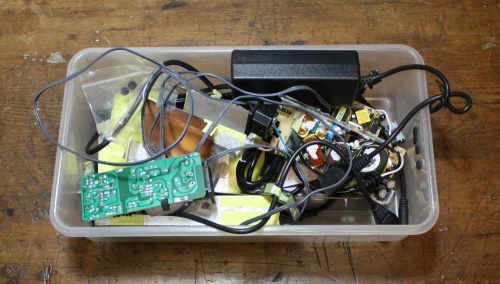 Introduction
Introduction
Power supplies are everywhere these days. With the advent of switching power supplies, the cost of high-current supplies has radically dropped. Maybe you’ve noticed how the large, heavy, wall-wart style adapters are no longer lurking around your baseboards, falling out of their sockets? Or occupying several of your valuable power-strip positions? But not all power supplies are created equal.
Whenever I get disgusted by a power supply, I inevitably tear it apart, judge it, and throw it at my power supply box of shame. There are so many of these light-weight supplies out there today that my collection is constantly growing and evolving based on what I deem to be a good supply.
This article takes a cursory look at what’s typically inside, and what quantities are measured during validation of a supply.
Engineering Triangle
Before I get into the meat of it, consider this diagram commonly presented as engineering curriculum.
This diagram is used when looking at products from a very high level. A customer may ask for a product that has tons of features, is super cheap, and was available yesterday. At this, the engineer scoffs and says “pick two.” It can be made quickly and with high quality, but it will cost a lot. Or, if you find it fast and cheap, perhaps the quality is suffering.
The triangle is applicable to power supplies because they take a great deal of work to make well, yet customers are crying for cheap supplies. As a supplier of electronics, it’s a constant struggle and compromise.
Certification Marks
Take a look at the nearest power supply labeling. It will hopefully have a slew of marks on it that indicate what standards it abides to. Politically, each country is a little different and thus has different ideas of which standards are relevant, so naturally a product with a worldwide customer base is going to have many of these marks (check out your laptop’s power brick).
Or, if the product is destined for America, it might only have a UL mark.I found a website that lists various marks with picures. I have to ask myself, “What’s to stop people from just printing the logo on the label?” There’s a huge fine involved if the agency catches you, but if the product is coming from some unknown supplier it can be dicey. One common thing to do is to print the “CE” logo with the ‘C’ and ‘E’ spaced closer together, which is known as a China Export and doesn’t have anything to do with what we call CE.
For more detail: SparkFun: A look inside some common power supplies


 Introduction
Introduction